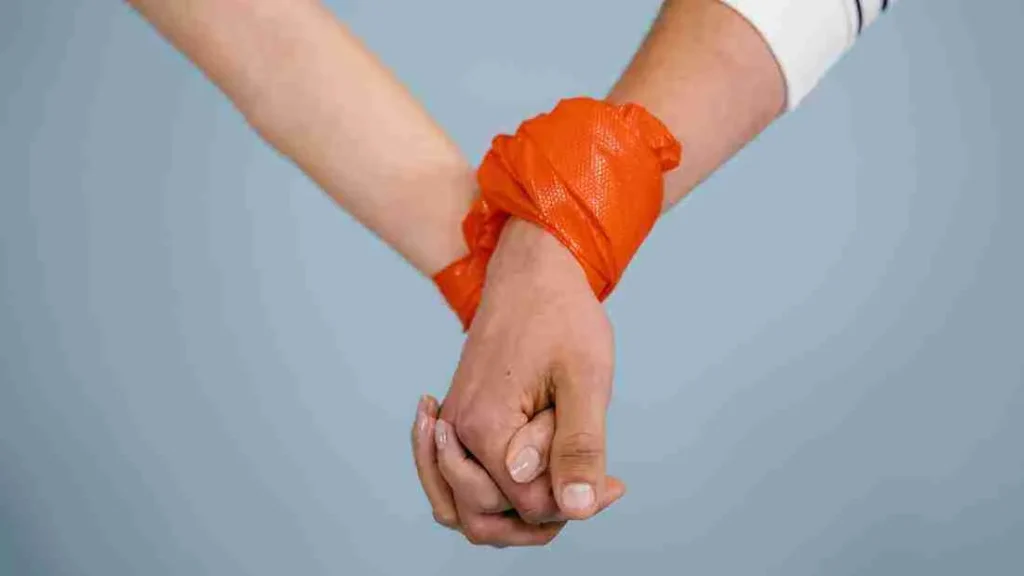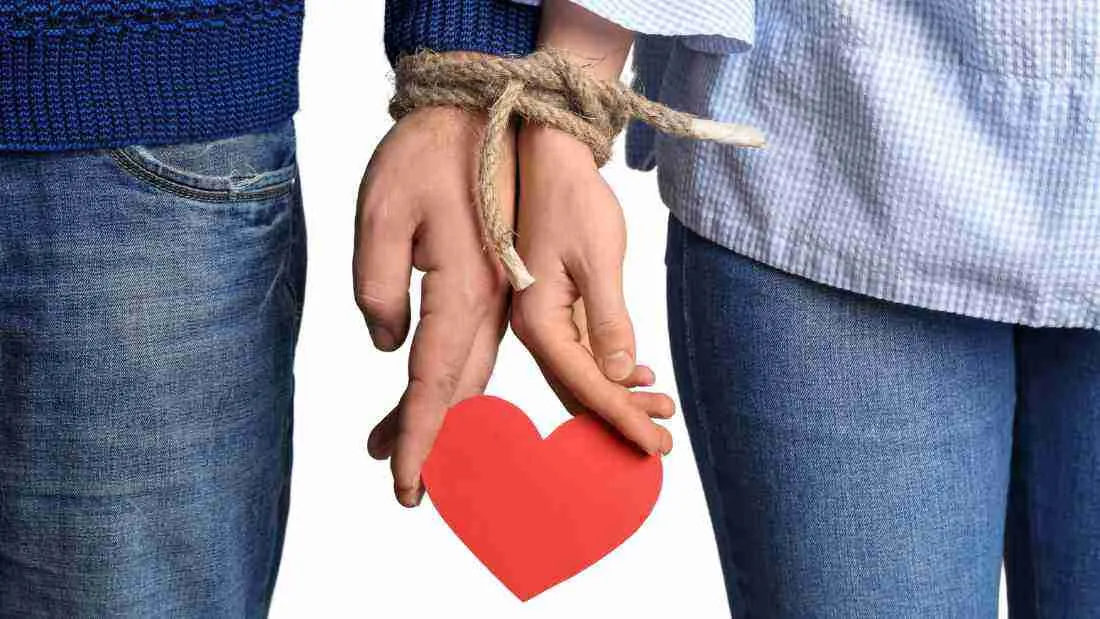Imagine holding onto a burning rope. Every second scorches your skin, but the idea of letting go terrifies you even more.
That’s what trauma bonding feels like. It’s the emotional paradox of loving someone who hurts you, craving the connection that simultaneously breaks you apart.
Trauma bonding hides in plain sight in romantic relationships, families, friendships, and even workplaces.
It’s not always visible to the world or even to the person living inside it.
But its impact runs deep, leaving emotional bruises that linger long after the relationship ends.
Let’s dive into the world of trauma bonding — not just as a psychological term but as a very real, very human experience.
Let’s understand it from the inside out.

What Is Trauma Bonding?
Trauma bonding is the emotional glue that forms between an abuser and their victim through cycles of abuse and intermittent kindness.
The bond is forged not out of love but out of fear, confusion, hope, and deep psychological conditioning. It creates a dynamic where the abused person becomes emotionally dependent on the very person causing the harm.
The bond feels magnetic — irresistible, confusing, intense. It keeps people tethered to painful relationships far past the point of logic or safety. That’s why you’ll often hear survivors say, “I couldn’t leave, even though I knew it was hurting me.”
The Mechanics: How Trauma Bonds Are Formed
To truly understand trauma bonding, we must look at the cycle of abuse, a repeating pattern that manipulates the brain and heart into submission.
The Cycle of Abuse
- Idealization or Love Bombing
At the start, the relationship feels magical. You’re flooded with attention, affection, and promises of a perfect future. It feels like you’ve found “your person.”
- Tension Building
The atmosphere changes. Criticism creeps in. You’re walking on eggshells, trying to keep the peace, doubting yourself.
- Incident of Abuse
The mask slips. Verbal attacks, manipulation, threats, gaslighting, or physical harm occur. Your world feels like it’s crumbling.
- Reconciliation
The abuser apologizes, cries, showers you with affection, and promises change. This stage brings temporary relief and re-ignites hope.
- Calm
Life returns to “normal.” You believe the worst is over — until the cycle begins again.
Each turn of this wheel deepens the trauma bond. Your brain becomes hooked on the “highs” of reconciliation, even as it drowns in the “lows” of abuse.
Why It Feels Like Love (Even When It’s Not)
Trauma bonds mimic the emotional rollercoaster of love — intensity, vulnerability, connection — but with one crucial difference: the love is conditional, inconsistent, and used as a weapon.
Here’s why trauma bonding feels so strong:
1. Intermittent Reinforcement
Just like gambling, when you get unpredictable rewards (a kind word after days of cruelty), your brain becomes obsessed with chasing the next “win.” You hold onto hope, even when reality shows otherwise.
2. Neurochemicals at Play
Dopamine, oxytocin, cortisol, and adrenaline — all flood your system during these dramatic ups and downs. It creates a neurochemical addiction to the relationship, making it feel like a literal withdrawal when you try to leave.
3. Emotional Investment
You’ve shared your secrets. You’ve dreamed of a future. You’ve fought to keep the peace. Walking away feels like losing part of yourself.
4. Shared Trauma or Vulnerability
In many trauma bonds, both people may have trauma histories. The abuser uses your pain to manipulate you, and you may empathize with their struggles — even excusing their behavior because “they’ve been through a lot.”
Who Is Most at Risk?
While anyone can fall into a trauma bond, certain people may be more vulnerable:
- Those with childhood trauma or abuse history
- People with low self-esteem
- Empaths or highly sensitive individuals
- Those who believe love requires suffering or sacrifice
- People in financially dependent or isolated situations
- Children of emotionally unavailable or inconsistent parents
Trauma bonding thrives where emotional needs go unmet — where love is taught to be earned, not freely given.
Recognizing the Signs
You might be in a trauma bond if:
- You keep justifying or minimizing your partner’s hurtful actions.
- You feel addicted to them, even if they make you feel small, anxious, or unsafe.
- You blame yourself when they hurt you.
- You feel more anxious than peaceful in the relationship.
- You remember the good times intensely and suppress the bad.
- You feel you can’t leave, even if you desperately want to.
- You’re isolated from friends and family.
These signs can be subtle at first. But over time, they become chains — invisible, yet unbreakable without intervention.
Why People Don’t Just Leave
There’s a dangerous myth that people in abusive or toxic relationships “choose” to stay. The truth is much more complex.
Fear
- Fear of retaliation
- Fear of being alone
- Fear of not being believed
- Fear of starting over
Financial Dependence
- Many victims can’t afford to leave, especially with children or no support system.
Emotional Addiction
- The bond feels like love. You keep hoping the “good” version of them will return.
Shared History
- Years invested. Shared trauma. Children. Memories. These create a sense of obligation.
Manipulation
- Gaslighting makes you question your reality. You start to believe you’re the problem.
No one wants to be hurt. They stay because they’ve been conditioned to believe it’s normal… or that it’s their fault
Healing: How to Break the Bond
Escaping a trauma bond is not just about leaving the person — it’s about unlearning everything that made the bond feel like love.
1. Acknowledge the Truth
Stop romanticizing the relationship. Journal the abuse. Revisit it when nostalgia kicks in. Remember: love doesn’t hurt like this.
2. Go No Contact
Block them. Delete the messages. Don’t check their social media. If you share children, use boundaries like parenting apps to minimize emotional contact.
3. Seek Therapy
Trauma-informed therapy helps rewire the emotional pathways that created the bond. Consider EMDR, CBT, or somatic healing approaches.
4. Join a Support Group
Hearing other survivors’ stories validates your experience. You’re not alone — and you’re not crazy.
5. Rebuild Identity
Take small steps: enroll in a class, start journaling, reconnect with hobbies, and surround yourself with people who affirm you. You are more than who they said you were.
The Aftermath: What Healing Looks Like
Healing is not linear. It may take months, years. But every step is worth it.
You’ll Know You’re Healing When:
- You no longer crave their validation.
- You stop blaming yourself.
- You start setting boundaries — and keeping them.
- You feel peace without drama.
- You forgive yourself for staying.
Healing from a trauma bond is like waking up from a dream where you were drowning — and learning to breathe again.
Rewriting the Narrative
Society often glamorizes intense, chaotic love — the kind that consumes you. But love isn’t meant to feel like survival. It’s meant to feel like safety.
If your “love” story has left you bruised, silenced, or lost, know this:
You can write a new story.
You can love again — but from wholeness, not wounds.
Final Words: You Are Not Broken
If you’re in a trauma bond right now, please hear this:
You are not weak.
You are not stupid.
You are not broken.
You are surviving.
And one day — maybe not today, but someday soon — you will no longer just survive. You will thrive.
Because love should never cost your peace. Love should never ask you to lose yourself.
And the moment you choose you, even in whispers or baby steps. That’s the moment the bond begins to break.

